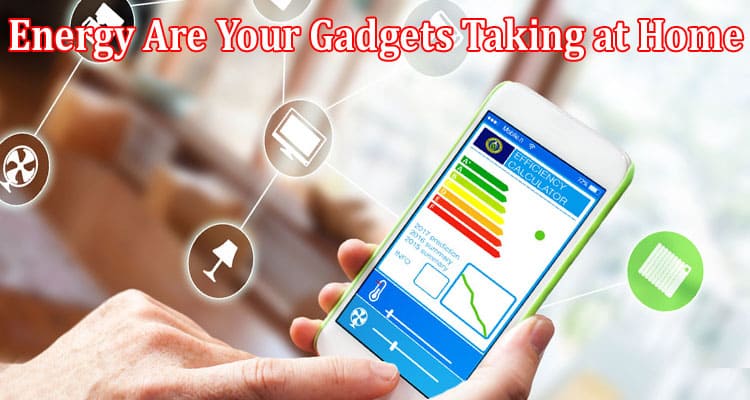How Much Energy Are Your Gadgets Taking at Home, and What to Do About It?
Contemporary households consume a significant amount of electrical power. Many years ago, power-hungry gadgets primarily consisted of appliances, lamps, radios, and televisions. However, the present scenario has seen a significant expansion in power-hungry devices, including energy-draining personal computers, constantly charging smartphones, perpetually active routers, swimming pool filters, security setups, monitoring cameras, baby surveillance devices, and intelligent audio systems, just to provide a glimpse of the multitude.
However, there is an unspoken expense associated with your energy expenses. Even when idle, the various devices that remain connected to power outlets gradually consume electricity within your household. Astonishingly, approximately 23% of your electricity is essentially squandered on these dormant devices, amounting to a staggering $19 billion annually for American citizens, according to a report by NRDC. Moreover, ExpressVPN mentioned energy consumption monthly to enlighten us about some of the most significant energy drainers in our residential spaces.
Continue reading to learn which household appliances consume the most electricity. Additionally, explore effective strategies to reduce these routine costs.
Most Power-hungry appliances at home
Energy ratings can differ across models and manufacturers; hence, we provide common values. To obtain an exact energy rating, please refer to the energy labels of your individual appliances.
| Household Area | Appliance | Energy rating (kW) | Daily time usage (hrs) | Average daily energy consumption (kWh) |
| Kitchen | Fridge freezer | 0.4 kW | 24 hrs | 0.75 kWh |
| Oven | 2.2 kW | 1 hr | 2.2 kWh | |
| Electric hob | 1.5 kW | 1 hr | 1.5 kWh | |
| Air fryer | 1.5 kW | 1hr | 1.5 kWh | |
| Kettle | 2.7 kW | 0.25 hr | 0.7 kWh | |
| Dishwasher | 1.2kW | 2 hr | 2.4 kWh | |
| Laundry room | Tumble dryer | 2.5 | 1 hr | 1.5 kWh |
| Washing machine | 1.5 | 0.75 hr | 1.2 kWh | |
| Vacuum cleaner | 0.7 | 0.1 hr | 0.07 kWh | |
| Bathroom | Electric shower | 10 | 0.5 hr | 5 kWh |
| Extractor fan | 0.01 | 0.5 hr | 0.005 kWh | |
| Living room | Games console | 0.2 | 2 hrs | 0.4 kWh |
| TV | 0.2 | 3 hrs | 0.6 kWh | |
| Broadband router | 0.01 | 24 hrs | 0.24 kWh | |
| Home office | Desktop computer | 0.14 | 8 hrs | 1.12 kWh |
| Printer | 0.05 | 0.05 hr | 0.05 kWh | |
| Heater | 2 kW | 3 hrs | 6 kWh | |
| Bedroom | Lightbulbs | 0.01 | 5 hrs | 0.05 kWh |
| Phone charger | 0.01 | 7 hrs | 0.07 kWh | |
| Hair dryer | 1.5 kW | 1.5 hrs | 0.23 kWh |
It’s simple to customize the numbers provided above to match your household’s appliance usage on a daily basis. You’ll then be able to compute approximated running expenses for every piece of equipment by multiplying the normal daily energy usage by the unit expense per kWh on your electricity tariff.
15 ways to save energy and electricity at home:
- Adjust your daily energy use conduct
- Swap out your light bulbs
- Employ intelligent power strips
- Set up a programmable thermostat
- Employ energy-saving appliances
- Cut down on water heating costs
- Install windows that promote energy efficiency
- Update your HVAC system
- Weatherproof your home
- Insulate your living space
- Opt for cold water when laundering clothes
- Replace or clean air filters regularly
- Opt for a toaster oven over a conventional oven
- Make the most of natural lighting
- Dress suitably for indoor and outdoor temperatures
Frequently asked questions
What consumes the highest amount of electricity in an average household?
The HVAC system is the most significant energy consumer within a home. Heating and cooling consume around 50% of the total energy in a typical home.
What is the average energy bill for a household and apartment?
The typical expenditure on electricity is approximately $198, as reported by the EnergySage marketplace covering the entire country. However, it differs significantly according to place and home size.
Can you reduce your electricity costs by unplugging devices?
Yes, you can cut 5-10% of your electricity bill by disconnecting unused devices in your home.




